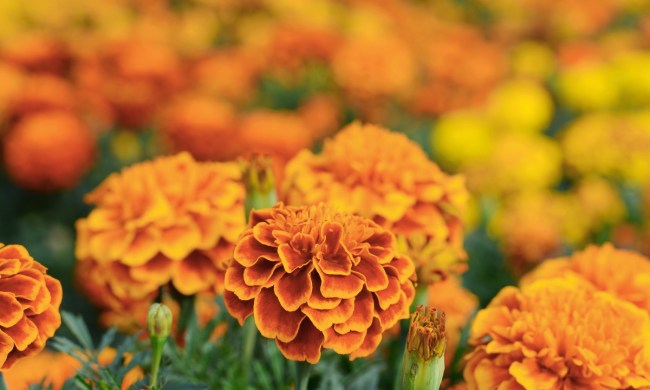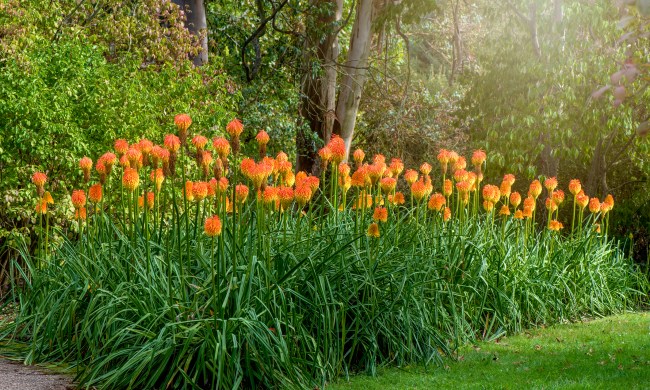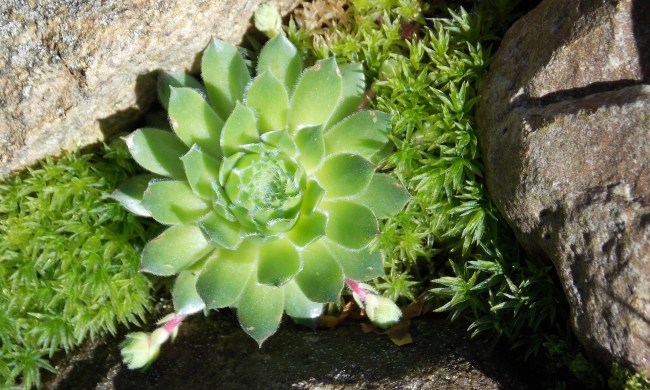There’s no better way to liven up a landscape than with a colorful display of flowers. They brighten the mood, draw attention toward (or away from) critical parts of the yard, and attract hummingbirds and other pollinators. During fall and winter, though, most plants go dormant, leaving patches of brown or gray where there should be lovely colors. Cool-season annuals are a great way to fix this, adding color back to your garden even during winter! Want to add cool-season annuals to your garden? Here’s what you need to know!
What are annual flowers?

Garden flowers fall into one of three categories: annuals, biennials, or perennials. Perennials come back year after year. Biennials grow to maturity in their first year and then produce flowers and seed in the second season before they die. Annual flowers complete their entire life cycle in a single growing season. Though they’re short lived plants, annuals offer the brightest, most diverse, and longest-lasting color.
Making the most of their short lives, annuals have adapted to mature quickly and produce an abundance of flowers throughout the season. Gardeners prefer to plant these flowers in strategic pockets around the landscape for an extended display of color. Some grow well in the summer heat, but others perform best in the mild days and cool nights of spring or fall.
Why plant cool-season annuals?

Cool-season flowers grow and bloom when daytime temperatures are in the 50s and 60s Fahrenheit. They tolerate frosty weather, and some will even maintain their ornamental beauty below freezing. This list includes both flowers and accent plants that can be used for in-ground flower beds and container gardens. Cool-season annuals are what you plant for the “shoulder seasons” of spring and fall, when conditions are mild, yet heat-loving plants would suffer.
The idea of “cool-season” gardening means different things, depending on where you live. Gardeners in the far north can use cool-season annuals as their main season landscape color. In the south, these hardy beauties brighten landscapes and patios from Halloween to Christmas and beyond, survive the mild winter, and rebloom in the early spring. Those in the broad temperate zone in between use cold-tolerant flowers to extend the growing season by planting them early or late in the year.
The best cool-season annuals

These beautiful flowers are easy to grow and produce wave after wave of seasonal color.
Bachelor’s Buttons, Centaurea cyanus
Bachelor’s Buttons, also called Cornflower, plants grow 1 to 3 feet tall on upright stems with slender gray-green foliage. The papery, button-shaped, blue, white, or pink flower heads attract butterflies.
Pot Marigold, Calendula officinalis
Pot Marigolds, often simply called Calendula, have an upright habit and grow to about 30 inches. They have somewhat fuzzy foliage and smooth stems. The daisy-like ray flowers range in color from pale yellow to golden, orange, red, or purple. Edible calendula flowers are useful in salads and are popular for herbal remedies.
Lobelia, Lobelia erinus
Also known as Edging Lobelia, this low, trailing plant displays intensely colored flowers in a variety of colors, including white, yellow, pink, red, violet, purple, and blue. It makes a perfect addition to the front edge of flower beds, or let it spill over the edges of containers.
Violas and Pansies, Viola tricolor and V. x wittrockiana
These are arguably the hardiest and most colorful of all cool-season annuals. Violas, also known as Johnny Jump Ups, continue to produce their 1-inch blooms in masses, as long as they are not frozen solid. They suffer little or no damage from weeks of ice and snow cover, and resume their colorful display as soon as they thaw.
Pansies have larger flowers and bloom slightly less in the coldest part of winter. Both pansies and violas come in a full spectrum of solid and patterned bloom colors from white to (nearly) black, and every color in between.
Snapdragons, Antirrhinum majus
This old garden favorite produces conical spikes of clustered flowers in shades of yellow, pink, red, and orange. Standard varieties grow more than 36 inches tall, while dwarf cultivars stay below 16 inches. These bold, colorful flowers work well at the back border of flower beds or as container garden centerpieces. Enjoy a bloom cycle in fall, and then, after resting through winter, they’ll come back for a spring encore.
Sweet Alyssum, Lobularia maritima
Sweet Alyssum forms spreading mounds of delicately lance-shaped foliage, topped with tiny flowers. The plants grow to about 6 inches high and 12 inches wide. The white, pink, or lavender flowers are sweetly fragrant and often become so dense as to completely obscure the foliage. Sweet Alyssum is an excellent choice for mixed container gardens and border plantings.
Sweet Peas, Lathyrus odoratus
Sweet Peas is a trailing or bushy annual with very fragrant red, pink, blue, lavender, or white blossoms. This cottage garden favorite is most often seen trained to climb on garden trellises or fences, where it reaches heights of 6 to 8 feet.
Sweet William, Dianthus barbatus
Sweet Williams grow 12 to 24 inches tall, although dwarf cultivars are available that only reach 4 to 8 inches. They produce dense, flat-topped clusters of small flowers in shades of purple, red, pink, and white, along with multicolored and double-bloom cultivars. As a bonus, sweet Williams add a pleasantly sweet fragrance to the early spring garden.
When should you plant cool-season annuals?

Most flowers are planted in the spring, after the last frost of winter has passed, so they can bloom as the weather warms up. However, cool-season flowers enjoy cool weather and dislike heat, so when should you plant them? Start your cool-season annuals 1-2 months before the first frost of winter, so that they have a well-established root system by the time the hard freeze sets in. Mid-fall, when the weather begins to cool off but is not cold yet, is the perfect time to plant your cool-season flowers. Similarly to warm-season flowers, you can start your cool-season plants earlier indoors, protecting them from the more extreme heat and sun of the summer.
Cool-season annuals are an excellent way to liven up gardens and yards during a season that is typically starting to go dormant. From the traditional fall colors of red, orange, and yellow to the cooler tones of blue and purple, there are plenty of cool-season flowers to choose from. Whether you want something to decorate your porch or fill your garden bed, cool-season annuals have something for everyone!




